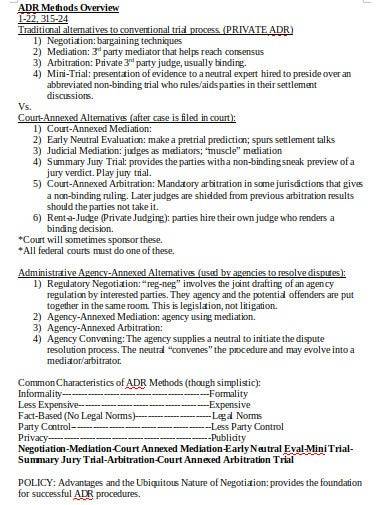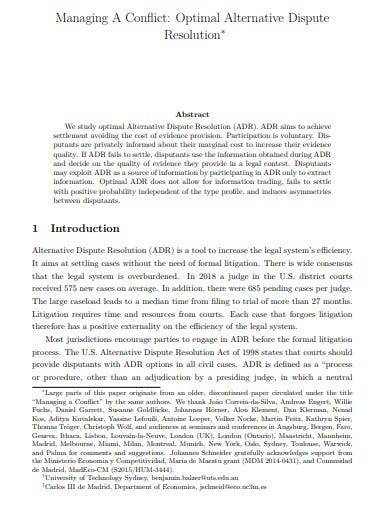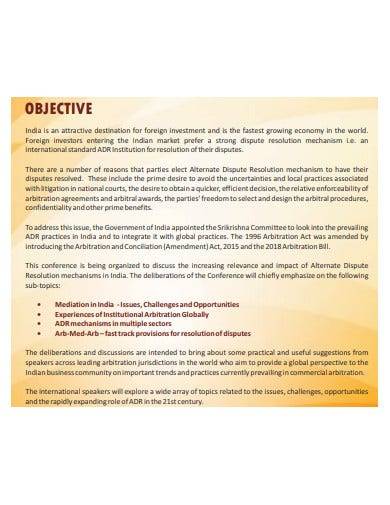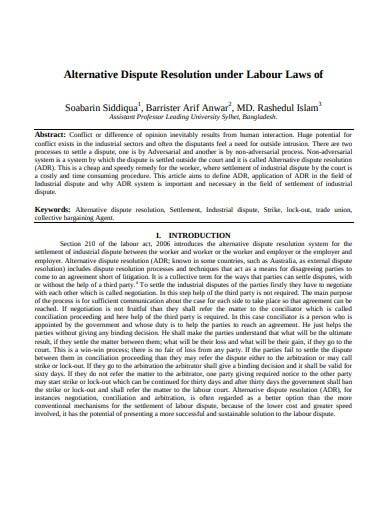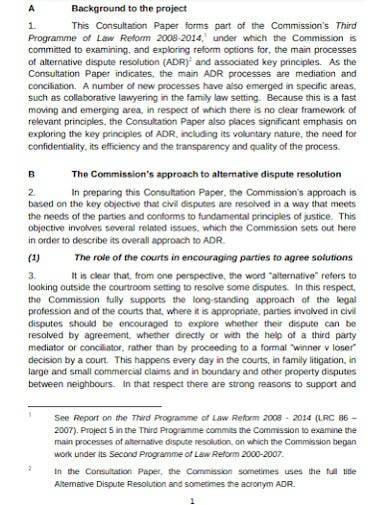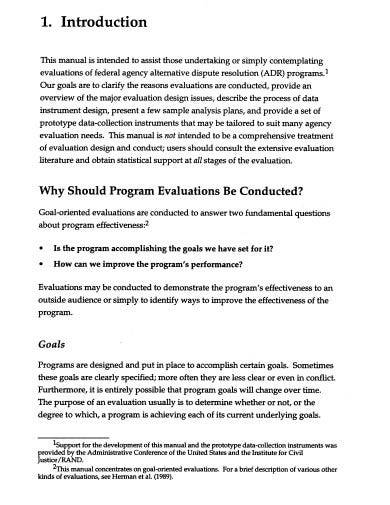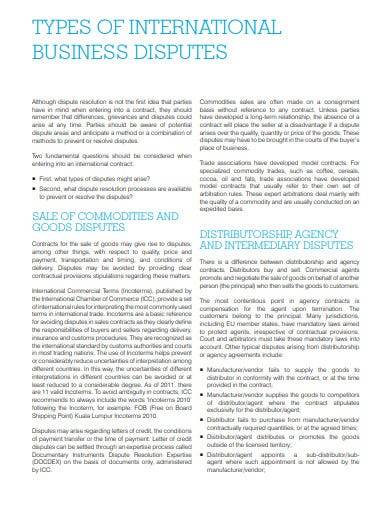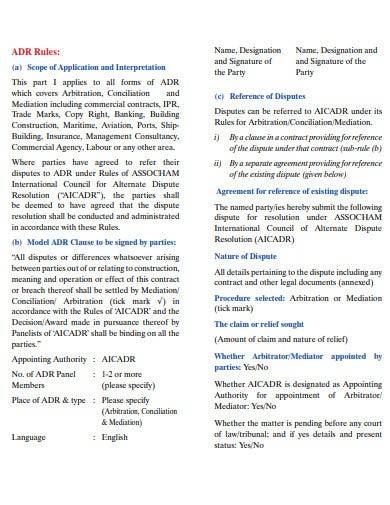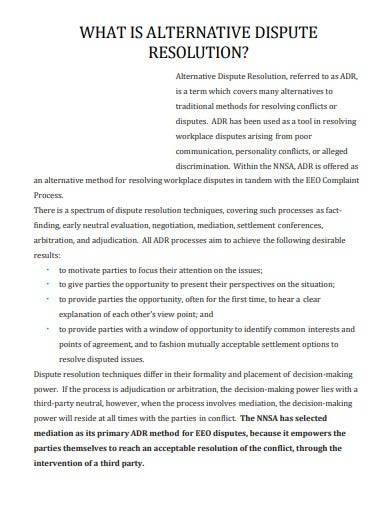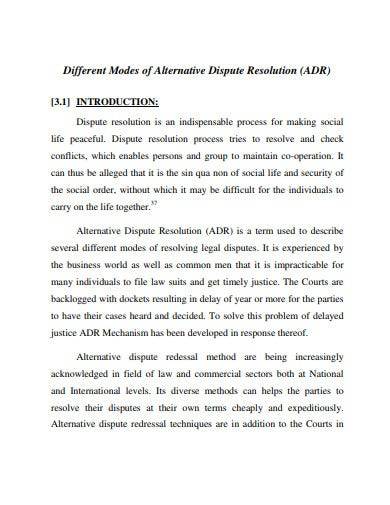The term alternative dispute resolution or ADR refers to the procedure agreed upon by parties involved in a dispute to use the assistance of a neutral third party to help them reach a mutual consent agreement and prevent litigation. There are different types of alternative dispute resolution that an individual can use which are arbitration, negotiated rulemaking, mediation, neutral factfinding, and minitrials. It aims to assemble the involved parties and urge them to work on a voluntary, consensual agreement instead of having the authority to decide the result of the case.
FREE 10+ Alternative Dispute Resolution Samples
1. Alternative Dispute Resolution Template
2. Optimal Alternative Dispute Resolution
3. Sample Alternative Dispute Resolution
4. Labour Alternative Dispute Resolution
5. Consultation Alternative Dispute Resolution
6. Alternative Dispute Resolution Program
7. Business Alternative Dispute Resolution
8. Formal Alternate Dispute Resolution
9. Basic Alternative Dispute Resolution
10. Alternative Dispute Resolution Overview
11. Professional Alternative Dispute Resolution
What is the Alternative Dispute Resolution?
Alternative dispute resolution is a method used to resolve disputes while avoiding litigation and regrouping all strategic planning and processes for resolving a conflict that happens outside of governmental authority. It enables parties to discover solutions to their issues or conflicts without the traditional legal or court proceedings but is still governed by various rules. With ADR, parties can save more money and accelerate settlement while also creating long-lasting outcomes, satisfaction, and developed relationships.
How to Prepare an Alternative Dispute Resolution
Alternative dispute resolution or mediation is the process of enabling parties to discover appropriate solutions to their conflicts without the need to go through legal or court proceedings. Parties often prefer to utilize alternative dispute resolutions instead of adversarial litigation because it is collaborative and allows the parties to better understand each of their positions and situations. Businesses sign resolution agreements, arbitration agreements, or settlement agreements to determine the process they will follow in case disputes should arise in the future.
Step 1: Identify the Disagreements
During a mediation session, you can work with an injury attorney to identify the appropriate settlement. Take advantage of alternative dispute resolution by identifying issues before the session begins. These points will help you effectively respond to them when they arise during the discussion.
Step 2: Determine an Appropriate Schedule for the Mediation Session
Scheduling the mediation session can affect its outcome. All parties involved should take a day for the mediation session and avoid distractions during its proceedings. Avoiding possible distractions allows the parties to fully participate in the session and make the most of the ADR.
Step 3: Ensure the Other Party Has Someone with the Authority
During the alternative resolution session, it is important that you make sure that both parties have the authority to agree to a resolution or settlement. They should avoid taking phone calls to talk to another person and make sure that the other party comes to the mediation with the proper authority to settle the dispute.
Step 4: Determine Where Your Settlements Are
If you are resolving a personal injury case, make sure to know your priorities. Work with an attorney ahead of the mediation session so you can determine what you can take away from the session. When you reach a settlement or resolution, both parties should sign a written and completed memorandum of agreement template or document.
FAQs
What is a mediation agreement?
A mediation agreement template is a document that is used to define an agreement that all parties agreed upon during a dispute and express their will to resolve the dispute between them by participating in a mediation session.
What are the terms to know in an alternative dispute resolution?
The terms you need to know in an alternative dispute resolution include arbitration, binding and non-binding, arbitrator, hearing, and mediation.
What are the advantages of alternative dispute resolution?
An alternative dispute resolution is less costly, not time-consuming, has fewer delays, is less formal, does not require the participation of an attorney, is less adversarial, provides greeted privacy than court records, and gives the involved parties greater control over the outcome of the session or discussion.
Alternative dispute resolution or ADR refers to any means or methods of settling disputes, issues, claims, or conflicts without the need to go through courtroom litigation. A party can submit a disagreement letter or complaint letter when they disagree on a certain idea or situation. During an ADR, a neutral party or commonly referred to as the mediator or arbitrator provides their services to help the parties involved in the dispute to come to an agreement or settlement and sign a mutual contract agreement to end the dispute.
Related Posts
FREE 11+ School Program Samples in MS Word | PSD | AI | Publisher | Pages | Indesign | PDF
FREE 10+ Concurrent Class Policy Samples & Templates in MS Word | PDF
FREE 10+ Student Freedom of Expression Policy Samples in PDF
FREE 10+ Suicide Prevention Policy Samples in MS Word | PDF
FREE 10+ Plagiarism/Cheating Policy Samples in MS Word | PDF
FREE 10+ Professional Boundaries Policy Samples in PDF
FREE 10+ Charter Document Samples in MS Word | PDF
FREE 10+ Related Personnel Policy Samples in MS Word | PDF
FREE 10+ Tuition Payment Policy Samples in PDF | MS Word
FREE 10+ Suspension And Expulsion Policy Samples in MS Word | PDF
FREE 10+ Class Syllabus Samples & Templates in MS Word | PDF
FREE 10+ Student Travel Policy Samples in MS Word | Google Docs | Pages | MS Outlook | PDF
FREE 10+ Program Description Samples in PDF | MS Word
FREE 10+ High School Scholarship Program Samples in PDF
FREE 10+ Uniform Complaint Policy and Procedure Samples in PDF

